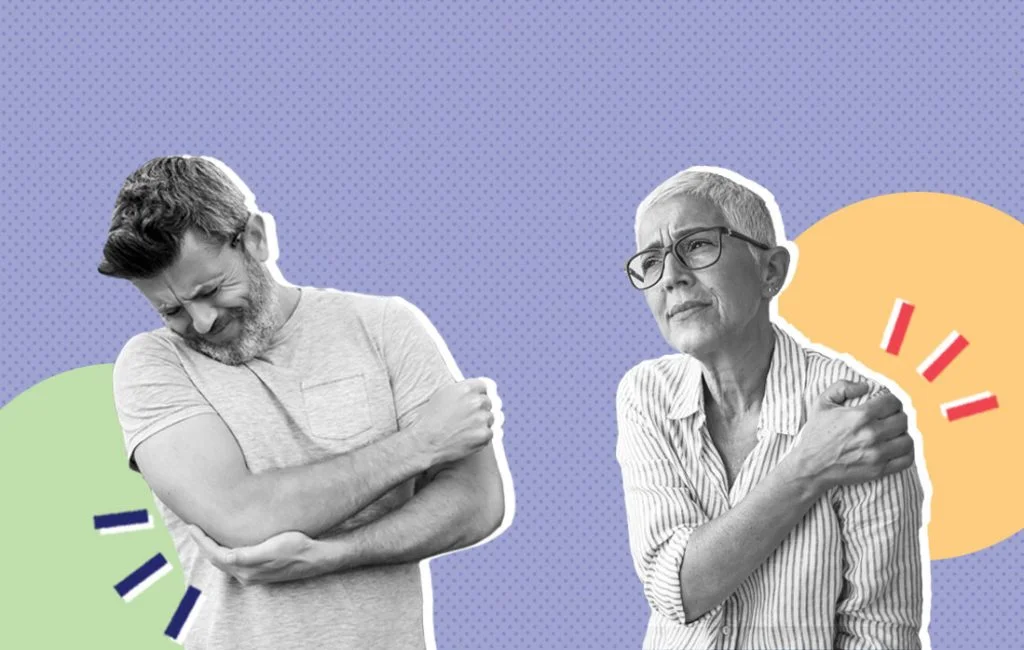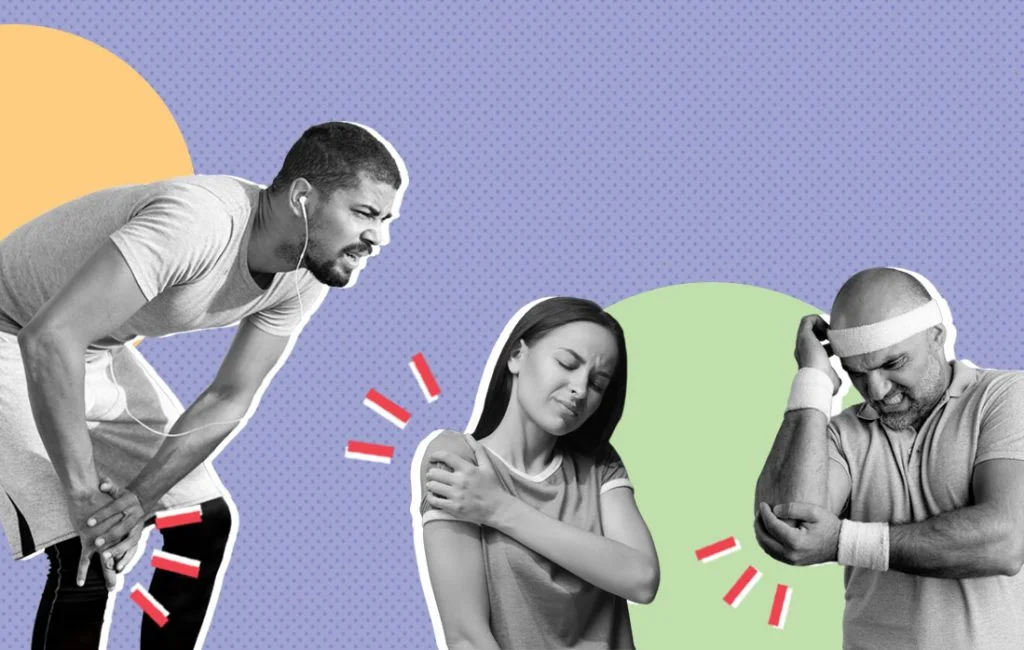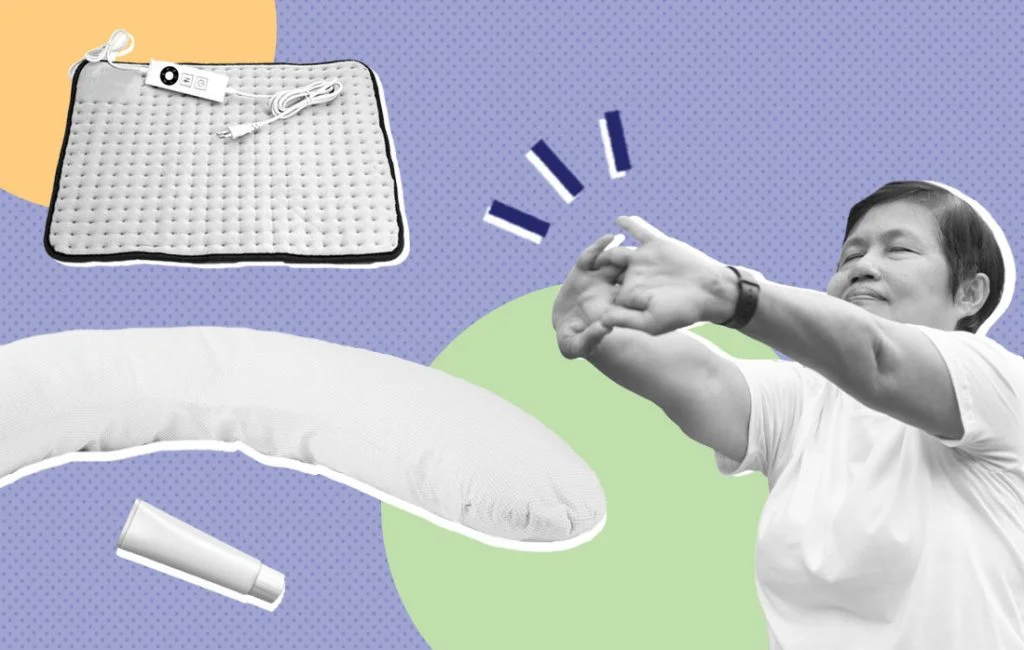If you or your loved one suffers from bursitis, you’re likely familiar with how this condition can disrupt sleep. In this article, we’ll briefly cover bursitis and the common types of bursitis before explaining how it can affect sleep. Finally, we’ll look at some tips from medical experts for sleeping better with bursitis. Keep in mind that we aren’t medical experts; please speak with your healthcare provider regarding any medical questions you may have.
About Bursitis
 Bursitis is a disease that begins in the body’s bursae. The US National Library of Medicine refers to bursae as tiny fluid-filled sacs that serve as a cushion between bones and moving parts such as tendons, muscles, and skin. (1) The human body contains more than 140 bursae.
Bursitis is a disease that begins in the body’s bursae. The US National Library of Medicine refers to bursae as tiny fluid-filled sacs that serve as a cushion between bones and moving parts such as tendons, muscles, and skin. (1) The human body contains more than 140 bursae.
Research has shown that more than 80% of all bursitis patients are men between the ages of 18 to 88, with the most common age range being 40 to 60. (2) According to a 2011 article in the American Academy of Orthopaedic Surgeons, bursitis is a common cause of musculoskeletal pain, particularly at the knee, elbow, hip, and heel. In addition, the study notes that most cases of bursitis can be treated without surgery. (3)
I spoke with Dr. Patrick McEneaney of Northern Illinois Foot & Ankle Specialists, who says that consistently doing activities that require kneeling, being on your hands and knees, or leaning on your elbows can form bursitis in those areas. Folks with jobs that require these tasks should be especially careful of developing bursitis.
Types of Bursitis
Elbow Bursitis
A 2014 study in Shoulder & Elbow says elbow bursitis, which goes by the medical name of olecranon bursitis, is characterized by inflammation. The researchers also state that it is typically caused by repetitive, minor trauma. (4)
Dr. McEneaney notes that since bursitis presents itself as swelling a particular area, people often don’t take it seriously. He says you should talk to your doctor if you’re experiencing aggravation, such as in the elbow, for over a month.
Knee Bursitis
Also known as prepatellar bursitis, knee bursitis can be quite painful. According to an article in the Indian Journal of Radiology and Imaging, knee bursitis can be characterized by painful inflammation and swelling over the kneecap and can be caused by prolonged or repeated kneeling. (5) A 2011 study in International Orthopaedics backs up this claim by stating that knee bursitis can be seen in folks in occupations that require a lot of kneeling, such as carpet layers and house cleaners. (6)
 Patellar Tendon Bursitis
Patellar Tendon Bursitis
This type of bursitis is also referred to as pes anserine bursitis. According to the National Library of Medicine, some causes of patellar tendon bursitis include obesity, overuse, or direct trauma. It also says that this type of bursitis is often accompanied by pain on the inside of the knee, and it is exacerbated by rising from a seated position, sitting with crossed legs, or walking upstairs. (7)
Hip Bursitis
Also known as trochanteric bursitis, hip bursitis is characterized by chronic hip pain, and it can often be a recurring problem, as a 2011 study in the Clinical Journal of Sport Medicine explains. The study also notes that nonoperative treatments often work with this type of bursitis. Such treatments can include weight loss, activity modification, nonsteroidal anti-inflammatory medications, physical therapy, and/or a single corticosteroid injection. (8)
Heel Bursitis
This type of bursitis is also known as retrocalcaneal bursitis. The American Academy of Orthopaedic Surgeons study talks about the pain associated with this condition, which the researchers attribute to overuse. The study also mentions that heel bursitis is typically found in runners, and it can limit the sufferer’s use of their heel. Dr. McEneaney says that the heel is one of the most common places that bursitis forms.
Tips for Sleeping with Bursitis
Bursitis causes pain, so it’s understandable that it could disrupt the sleep of sufferers. A 2012 study in Arthritis Care and Research examined 2,225 Caucasian women under the age of 65, and found that those with hip pain (such as that caused by hip bursitis) were more likely to have interrupted sleep than those with no pain (9). Dr. McEneaney also acknowledges that bursitis can reduce your quality of sleep.
While bursitis may present sleep issues, there are ways to improve your quality of rest. To find out more, I consulted medical experts and notable medical references.
Try a Cooling System or a Heating Pad
I spoke with Nurse James Cobb of The Dream Recovery System about some ways folks with bursitis can sleep better. He says that you should determine if heat or cool makes you feel better before choosing either a bed-cooling system or a non-magnetic-field-producing heating pad. If you decide to treat your bursitis through cooling, he notes that you’ll need to build up a tolerance for it. He told me that overdoing this can make you uncomfortable, which interferes with your sleep.
 Stretch, Strengthen, Compress, and Brace Bursitis Areas
Stretch, Strengthen, Compress, and Brace Bursitis Areas
The National Institutes of Health (NIH) recommends engaging in gentle stretching and strengthening exercises areas of bursitis. They also recommend applying compression to the problematic area. Another option, according to the NIH, is putting a brace, splint, or band on the painful area to help soothe the pain. (10)
Use a Soft Mattress or a Body Pillow
If you’re experiencing aches and pains as a result of bursitis, consider using a soft mattress. The right soft mattress for you should provide optimal support and pressure relief. Nurse Cobb also recommends placing a small body pillow between your knees for more comfortable rest. Dr. McEneaney suggests those with bursitis in the elbow or heel should consider keeping those areas off the bed when sleeping.
Rest and Elevate the Problematic Areas
The NIH recommends resting the areas affected by bursitis. Dr. McEneaney agrees, saying that icing the area, in addition to resting it, can help. The NIH also says that elevating the bursitis-affected area may help.
Use Anti-Inflammatory Remedies
Dr. McEneaney recommends rubbing an anti-inflammatory gel on the problematic areas or taking oral anti-inflammatory medicines. In regards to other oral medications, such as sleeping pills, he says it’s better to keep pressure off the area and decrease any activities that aggravate your bursitis.
Drain the Bursae
You should certainly consult your doctor before doing this, but draining the bursae might help. Specifically if you have heel bursitis, Dr. McEneaney says that you may be able to drain the bursae at this area. He says you can do so by sticking a needle in the bursae and pulling out the fluid. In addition, he explains that injecting the bursae with cortisone might help it drain easier. Lastly, he says that in worst case scenarios, the bursae can be removed surgically.
Last Word From Sleepopolis
We hope you’ve been able to find some useful information here to help you or your loved one sleep better while living with this painful condition. Resting, cooling, stretching, and taking anti-inflammatories are just some of the ways you can soothe your bursitis at night. Please remember that we’re not medical experts, so be sure to consult your healthcare provider with any health-related questions.
References
- “Bursitis.” US National Library of Medicine, https://medlineplus.gov/bursitis.html
- Baumbach, S et al. Prepatellar and olecranon bursitis: literature review and development of a treatment algorithm. Archives of Orthopaedic and Trauma Surgery. Dec 5, 2013.
- Aaron, D et al. Four Common Types of Bursitis: Diagnosis and Management. American Academy of Orthopaedic Surgeons. Jun 2011.
- Blackwell, J. Olecranon bursitis: a systematic overview. Shoulder & Elbow. July 2014.
- Chatra, P. Bursae around the knee joints. Indian Journal of Radiology and Imaging. 2012.
- Huang, Y et al. Endoscopic treatment of prepatellar bursitis. International Orthopaedics. Mar 2011.
- “Pes Anserine Buritis.” National Library of Medicine, https://pubmed.ncbi.nlm.nih.gov/30422536/.
- Lustenberger, D. Efficacy of Treatment of Trochanteric Bursitis: A Systematic Review. Clinical Journal of Sport Medicine. Sep 2011.
- Parimi, N et al. Hip Pain while using lower extremity joints is associated with sleep disturbances in elderly Caucasian women: the Study of Osteoporotic Fractures. Arthritis Care and Research. Jul 2012.
- “Bursitis.” National Institutes of Health. https://www.niams.nih.gov/health-topics/bursitis#tab-treatment



























